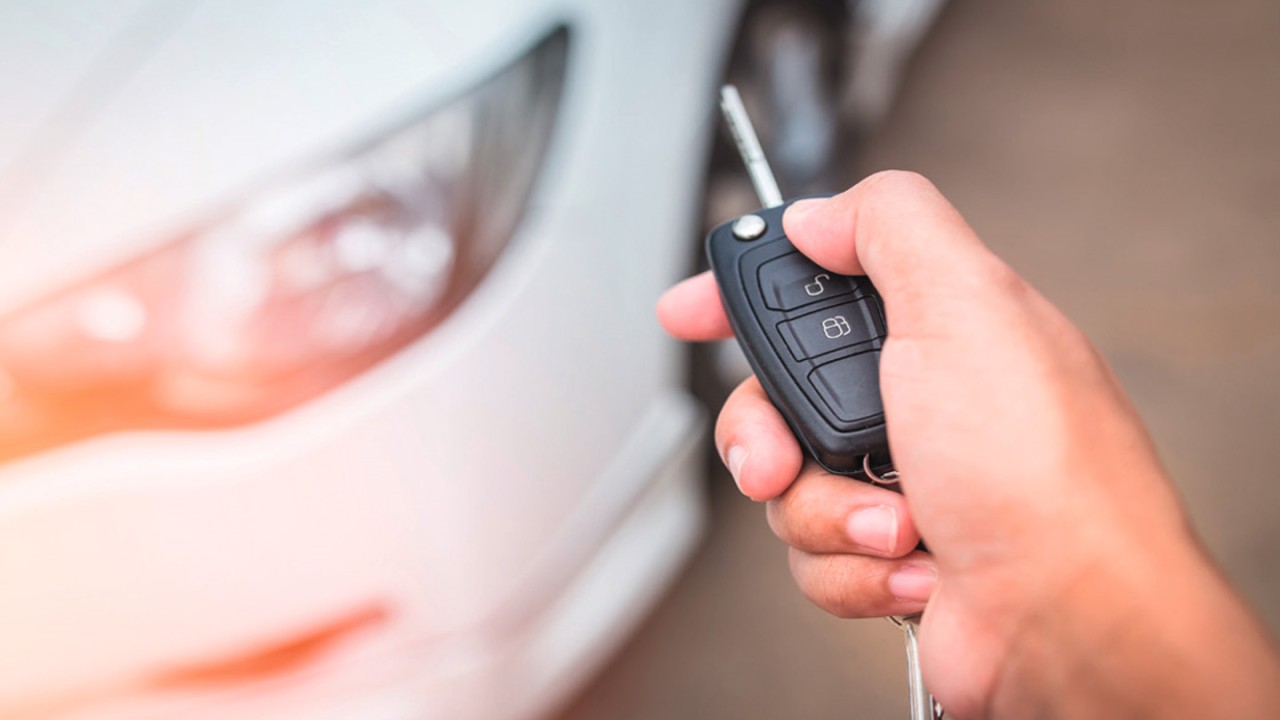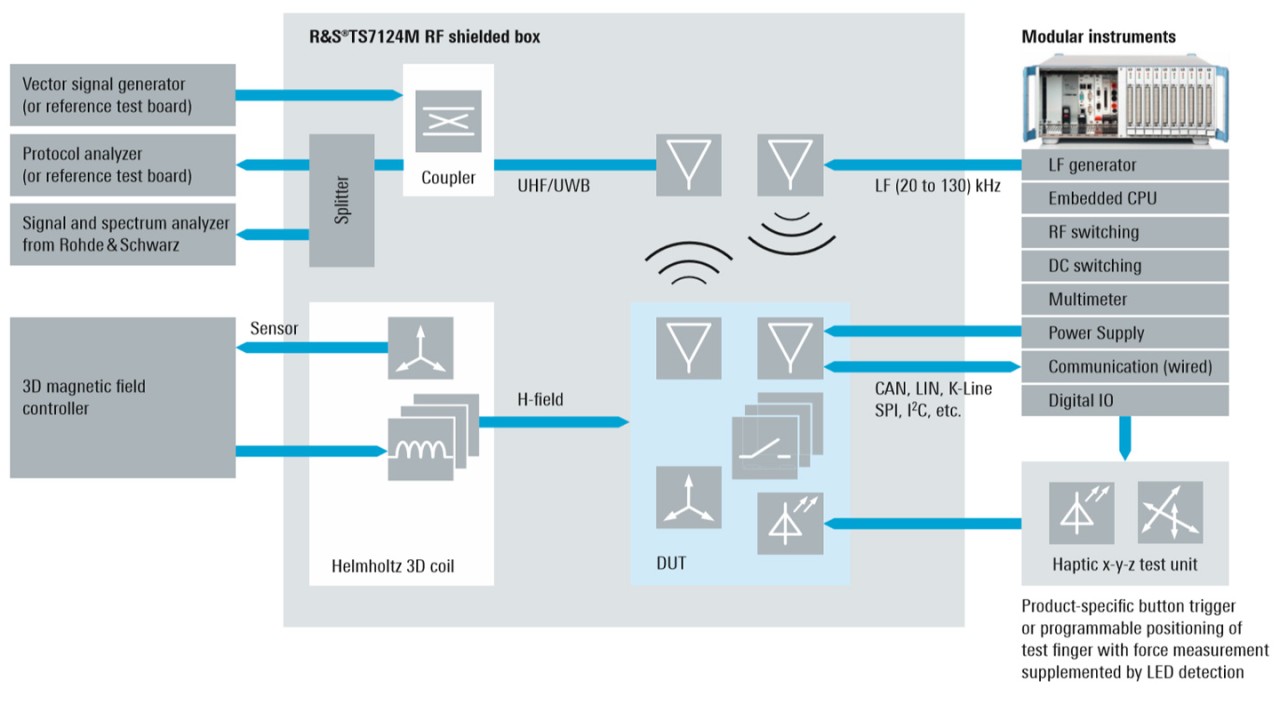T&M solution
Rohde & Schwarz offers flexible solutions that cover all technologies and fulfill the high requirements of interference- free function testing in development and production. The highly customizable solution thoroughly checks the strict requirements during R&D and can be optimized for high throughput in the production phase.
The RKE test system solution comes with a fully automatic R&S®TS7124 RF shielded box, providing a shielded environment for testing devices. The box can be equipped with an application-specific DUT mount and an adapted antenna system.
A Rohde & Schwarz signal and spectrum analyzer receives the transmitted signals and measures parameters such as the occupied bandwidth, channel power, spurious emissions and adjacent channel leakage. Range tests to measure the time of flight between two ultrawideband DUTs, require an additional electronic programmable delay.
A Helmholtz magnetic coil and a corresponding 3D magnetic field generator are used to test and calibrate traditional magnetic-field-based smart key systems.
The test system is controlled by an R&S®TSVP PXI-based platform with an optional embedded PC. The supply current in the various operating modes can be measured and synchronized to RF bursts from UWB signals. Communications with the DUT can be handled, for instance, via LIN, CAN, I2C or SPI.
The test conditions can be monitored and adjusted using the powerful R&S®Quickstep test sequencer software. Test data can be collected for further processing, even outside the test system. The modular design of the solution allows easy adaptation to current and future customer requirements.







